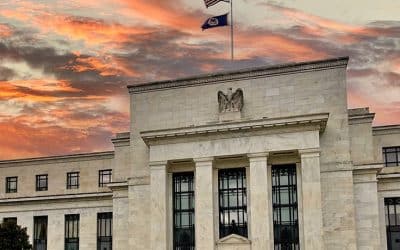Markets losing faith in Trump's empty promises

Redacción Mapfre
Monthly report prepared by MAPFRE Inversión
The term “ir de farol” (bluffing) is commonly used in card games (especially in poker) to describe a ruse or tactic intended to intimidate opponents. This expression comes from one of the Royal Spanish Academy's definitions of "farol": a boastful or flashy move that lacks substance. We're not sure whether Mr. Trump plays poker or even knows what the term means, but markets seem to have caught on to his negotiating style — heavy on bluffs and quick to retreat — earning it the nickname “TACO Trade” (short for “Trump Always Chickens Out”).
Setting aside acronyms and political noise, the broader economic picture is still slowly shifting in the direction we highlighted in last month’s report. It’s the result of deeper structural changes that are underway, though their full impact will unfold gradually over time. In some ways, the current moment echoes Mario Draghi’s now-famous “Whatever it takes” speech from 2012, when he promised to do whatever was necessary to save the euro. Though the context today is completely different, the parallel lies in how the ECB President’s words lacked short-term credibility, yet ultimately had a significant impact on the performance of financial assets over time.
Judging by the way markets have bounced back from April’s losses, pushing major indices back to or above all-time highs, this time we may be witnessing something similar — but potentially riskier. In other words, investors don't seem to be taking seriously the potential impact that a multipolar and less cooperative world could have on economic conditions and asset prices. That said, there’s also a more optimistic take: the greater the competition, the stronger the incentives to innovate and grow — in what might resemble a kind of idealized capitalism. It’s a scenario we wouldn’t rule out.
Few Important Changes
May was a very positive month for equity indices, which seem to have regained optimism thanks to Mr. Trump’s “bluffs” and an economy that isn’t performing as poorly as the market began to price in April, when reciprocal global tariffs were announced. Regarding the economic backdrop, the concern that strong macro data would start to reflect the weakness suggested by sentiment surveys didn’t materialize in May. As we’ve noted before, abrupt changes take time to show up in the data.
For now, the most we can see is a clear economic slowdown in the US, though it's still far from a recession, and low but steady growth in other regions. This doesn’t mean that the month was positive by any means from a macroeconomic perspective. The US Macro Surprises Index returned to negative territory, mainly driven by a weaker-than-expected services sector report that was only partially offset by strong job creation in May (139,000 vs. 126,000 expected) and a slight drop in inflation to 2.3%, helped by lower energy prices.
However, if we look at the core inflation rate, it remains stubbornly close to 3% (2.8%, to be exact), and given the new tariff policies and a slow unwinding of monetary expansion, a meaningful decline seems unlikely. This is perhaps the most concerning issue since high inflation isn’t necessarily problematic when paired with strong economic growth. However, subdued growth outlooks could cause persistent inflation to weigh heavily on long-term US fixed income. This contrasts with Europe, where inflation appears more contained, hovering close to the 2% target. The outlook there is more favorable thanks to the recent appreciation of the euro, which makes imports cheaper, and falling energy costs.
Is US Fixed Income Now a Risk Asset?
One of the biggest events in May was Moody’s downgrade of US sovereign debt, which removed the US from the elite group of countries with the highest credit ratings. Although Moody’s was the last major agency to hold this rating and had been reviewing it for several years, the downgrade impacted US bond prices and reinforced an upward trend in yields on long-term Treasuries (particularly those with 10- and 30-year maturities).
This trend is fueled by higher inflation expectations, diminishing confidence in the Trump administration, and a substantial volume of debt that needs to be refinanced in the coming months. This market has experienced high volatility, as evidenced by the rare occurrence of a simultaneous rise in interest rates and decline in the US dollar’s value. Looking back, however, this might not represent a loss of confidence, but rather a normalization of interest rates.
The abnormally low rates of the 2011–2021 period led many to believe that rates could remain insensitive to ballooning debt and deficits with little sign of abating. However, the risk was always present, and the market is now pricing it in. From the perspective of an active investor, this is actually a positive thing. Risk being rewarded with higher returns is the foundation of rational financial decision-making. So rather than losing its status as a safe-haven asset, US debt reflects a more efficient fixed income market — one that allows capital to flow freely in search of the optimal risk-to-return ratio.
Conclusion: The Snapshot Looks Optimistic, but the Underlying Picture Is More Cautious
The short-term dynamics and fading impact of Mr. Trump’s announcements have restored some of the market optimism that was lost in April. Equity market volatility remains below its historical average, but uncertainty persists. In fact, tariff policies are causing serious headaches for corporate management teams when planning investments, reflected in downgraded earnings growth expectations for the remainder of the year.
The seeming calm in the equities market contrasts with the challenges faced by the fixed income market, which is struggling to adapt to a new environment where monetary policy is taking a backseat to fiscal policy as the primary growth driver, with all the implications that has for bond prices. Central banks will continue to support markets through liquidity injections, but their scope for further interest rate cuts is limited. With the latest rate cut, the ECB may have already pushed rates to a neutral level, awaiting new data before considering further easing. Meanwhile, the Fed has little room to maneuver if inflation stays near 3%.
We remain constructive on equities in the short term, as optimism may continue. However, there is less consensus around fixed income, especially in longer maturities. An optimal asset mix could include equities for long-term capital appreciation, fixed income instruments for positive coupon returns, and alternative assets for reduced correlation.



